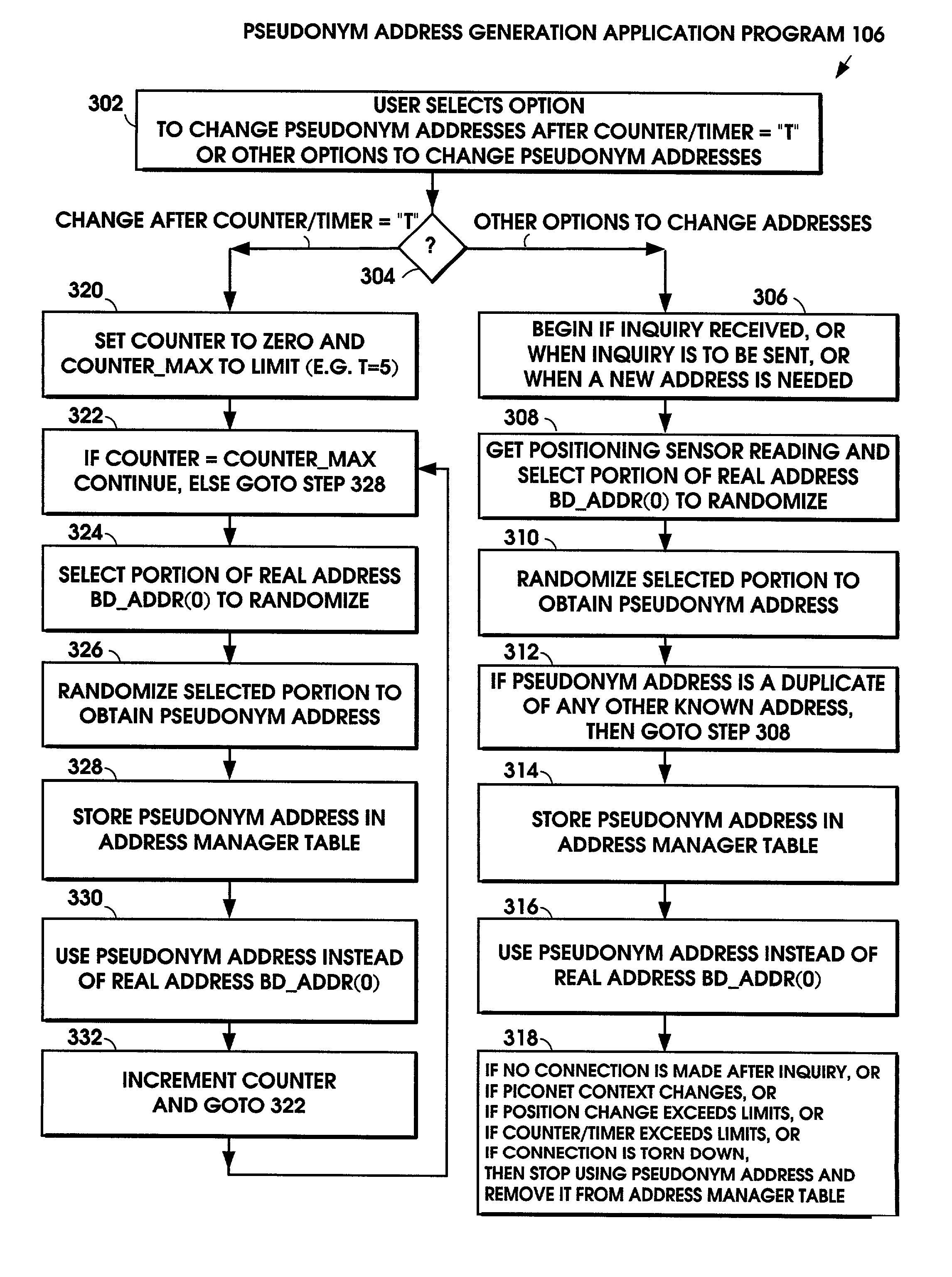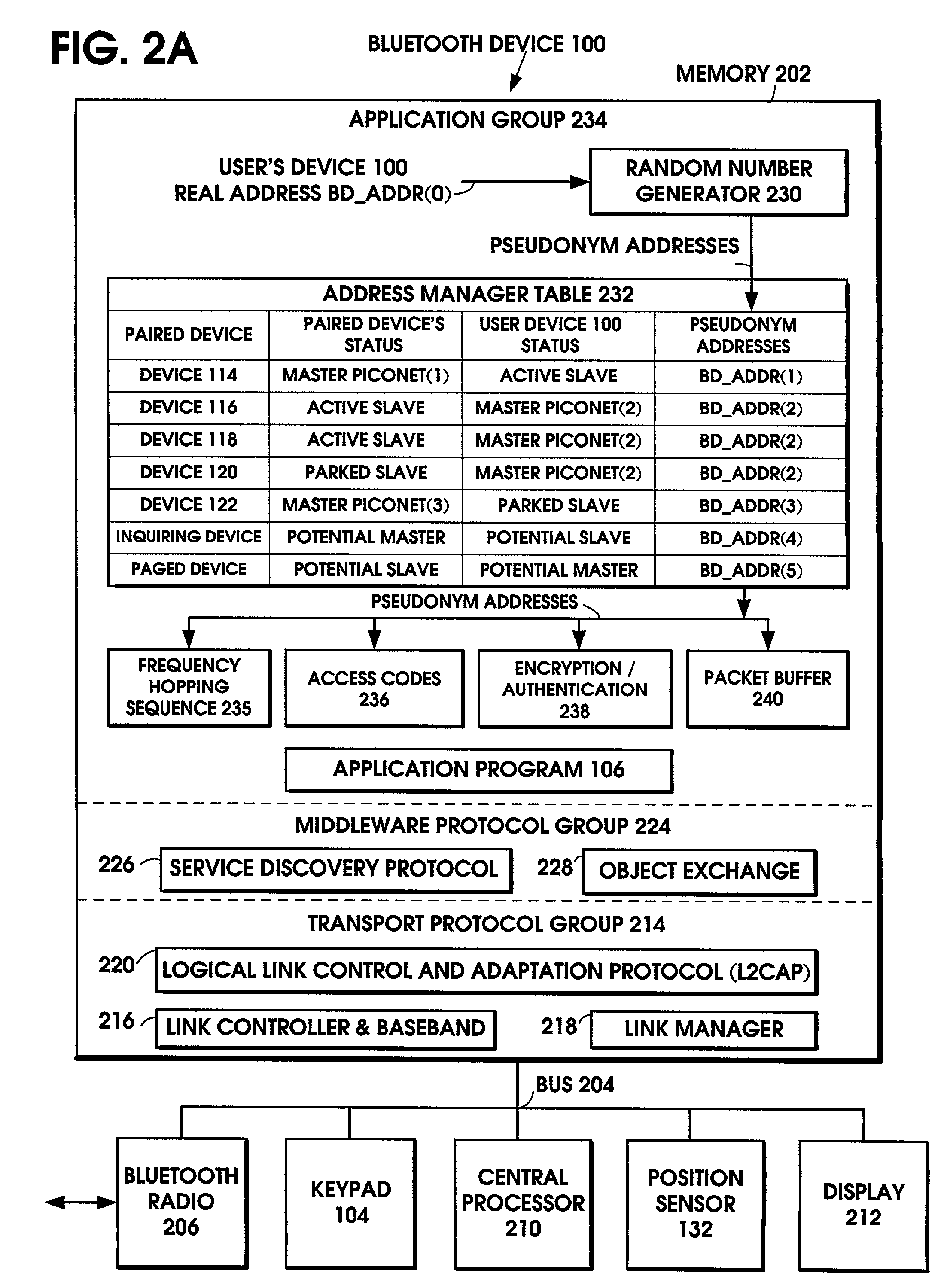Method for protecting privacy when using a Bluetooth device
a bluetooth device and privacy protection technology, applied in the field ofubiquitous computing, can solve problems such as compromising user privacy and user's safety, and achieve the effect of improving user safety and privacy
- Summary
- Abstract
- Description
- Claims
- Application Information
AI Technical Summary
Benefits of technology
Problems solved by technology
Method used
Image
Examples
Embodiment Construction
[0022]The Bluetooth Special Interest Group, Specification Of The Bluetooth System, Version 1.0B, Volumes 1 and 2, December 1999, describes the principles of Bluetooth device operation and communication protocols. Up to eight Bluetooth devices can join together in an ad hoc communications network called a piconet. A piconet is an arbitrary collection of Bluetooth-enabled devices which are physically close enough to be able to communicate and which are exchanging information on a regular basis. Each piconet has one master device and up to seven slave devices. All communication is directed between the master device and each respective slave device. The master initiates an exchange of data and the slave responds to the master. When two slave devices are to communicate with each other, they must do so through the master device. The master device maintains the piconet's network clock and controls when each slave device can communicate with the master device. Members of the ad hoc network ...
PUM
 Login to View More
Login to View More Abstract
Description
Claims
Application Information
 Login to View More
Login to View More - R&D
- Intellectual Property
- Life Sciences
- Materials
- Tech Scout
- Unparalleled Data Quality
- Higher Quality Content
- 60% Fewer Hallucinations
Browse by: Latest US Patents, China's latest patents, Technical Efficacy Thesaurus, Application Domain, Technology Topic, Popular Technical Reports.
© 2025 PatSnap. All rights reserved.Legal|Privacy policy|Modern Slavery Act Transparency Statement|Sitemap|About US| Contact US: help@patsnap.com



